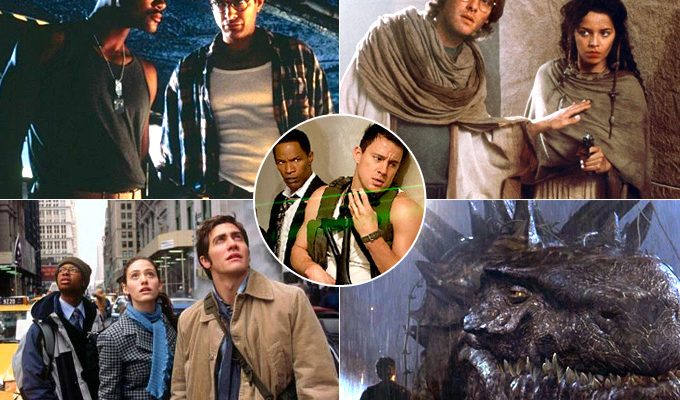
When it comes to bringing popcorn ready, big screen spectacle to the multiplex, there are few filmmakers (except for maybe Michael Bay) who do it with as much flair as Roland Emmerich. The German-born director has been making theater speakers rumble ever since “Universal Soldier,” but he really made his mark in the ’90s thanks to the White House exploding “Independence Day” (which has a sequel coming in 2015) and the monster movie “Godzilla.” And since then, films like “The Day After Tomorrow” and “2012” have come to define the trademarks most audiences know him for — high concept FX vehicles in which the world is at peril, but rescued by an everyman who saves the day.
READ MORE: The Essentials:The Films Of Michael Bay
This weekend, Roland Emmerich lays waste once again to 1600 Pennsylvania Avenue with “White House Down,” starring Channing Tatum as the unemployed, Secret Service wannabe, who is thrust into action to save the President (Jamie Foxx) when terrorists attack. And we thought it would be a good time to revisit Emmerich’s body of work – one in which nuance and thunderous overkill sit side by side, where vulgarity and the auteur’s touch are both very present. It’s also one that contains some interesting outliers such as the historical drama “The Patriot,” the prehistoric “10,000 BC” and the Shakespeare conspiracy theory “Anonymous.” So which of these blow shit up or just blow? Read on…
READ MORE: The 50 Best Movie Monsters Of All Time
“10,000 BC” (2008)
For everyone who ever wondered how the Egyptian pyramids were built, Emmerich is here to tell you: with the help of wooly mammoths. Playing fast and loose with history, common sense and plausibility (even by the admittedly lax standards of Roland Emmerich movies), “10,000 BC” throws everything into the mix – giant killer birds, the legend of Atlantis, an Aesop’s fable interlude with a saber-toothed tiger – and still comes across as being horribly dull and tedious. An epic mash-up of “Apocalypto” and “Clan of the Cave Bear” should have been a thrilling adventure especially under the direction of Emmerich who seems barely engaged enough to make sure to hair on the computer-generated wooly mammoth looks okay. This is what happens when you let your composer (Harald Kloser) co-author your script. Emmerich specializes in glossy trash, but glossy trash that is rarely this forgettable and bland. [F]
 “Godzilla” (1998)
“Godzilla” (1998)
A textbook example of it seemed like a good idea at the time: Emmerich and his co-writer/producer/partner-in-crime Dean Devlin, coming off the smash success of “Independence Day,” were given the opportunity to remake the beloved Japanese monster movie “Godzilla,” updating it for modern audiences while Americanizing it at the same time (this remake would be set in Manhattan). Given their efficiency with large-scale mayhem and destroying beloved landmarks, it seemed like a sure bet, and leading up to the summer of 1998, everyone was excited about an Emmerich/Devlin “Godzilla.” (This was especially true thanks to the ingenious marketing campaign by Sony, one that didn’t reveal the creature at all, but instead had banners on buses that said “His foot is this big.”) After some intriguing early scenes documenting the monster’s destruction, the movie soon turns sour: the Emmerich/Devlin formula of a mismatched team (borrowed from Michael Crichton novels and old sci-fi movies) facing down an otherworldly menace feels worn; the computer-generated effects were still rudimentary at the time and far too widely utilized; and baffling decisions like having it rain for the entire movie and indulging in a number of mean-spirited jabs at critics Gene Siskel and Roger Ebert (notoriously unforgiving of the filmmaking pair), cloak the movie in an oppressively bleak atmosphere, one that doesn’t quite lend itself to fuck-yeah summer movie escapism. There are some mildly enjoyable moments, like a sequence at the end, set in Madison Square Garden and borrowed from Steven Spielberg‘s much-better “The Lost World: Jurassic Park,” with a bunch of little baby Godzillas, but this movie barely lets you crack a smile. The fan blowback was swift and decisive: the new monster was nicknamed GINO (for Godzilla In Name Only) and in Ryhei Kitamur‘s “Godzilla Final Wars,” the “classic” Godzilla actually fought GINO and handily whipped his ass by throwing him into the Sydney Opera House and unleashing a whole bunch of scary dragon breath. [F]

